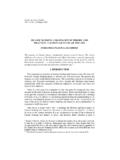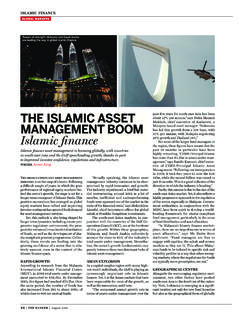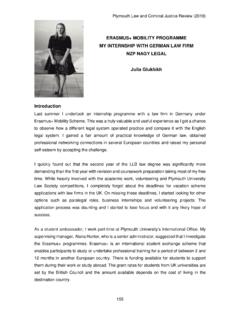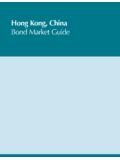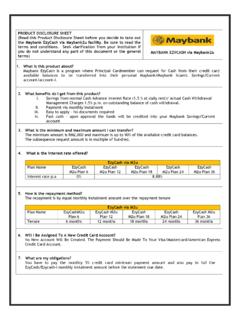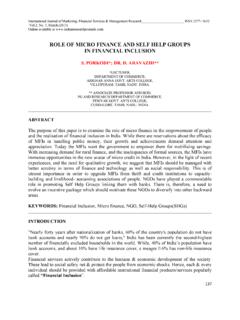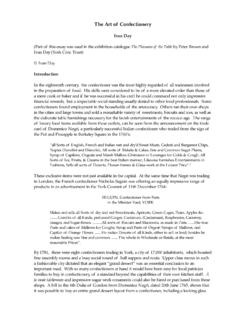Transcription of THE 1997-98 FINANCIAL CRISIS IN MALAYSIA: CAUSES, RESPONSE ...
1 islamic Economic Studies Vol. 9, No. 2, March 2002. THE 1997-98 FINANCIAL CRISIS IN malaysia : causes , RESPONSE , AND RESULTS . ZUBAIR HASAN . This paper argues that the 1997-98 FINANCIAL CRISIS did not hit malaysia because the economic fundamentals of the country were weak. It was the result of massive unpredictable flight of short-term portfolio investment from the region including malaysia . The paper assembles evidence, and employs econometric tools to support the contention. It maintains that the choice of the country to impose selective capital controls for remedying the situation was efficacious, and proved fairly rewarding. It also makes a few observations from an islamic angle that may help forestall the occurrence of such crises in future.
2 1. INTRODUCTION. The 1997-98 Asian FINANCIAL CRISIS originating from Thailand struck one country after another in almost no time, malaysia being among the later victims. The literature has since been full of books and articles on the subject. However, much has not been written exclusively about the Malaysian experience. The position of the country has largely been examined in comparative discussions on the subject. Such discussions, though useful, often tend to generalize the analysis beyond reasonable limits. Economic structures, social environment, political settings, and international relations of the countries that were caught in the turmoil have been much diverse to allow meaningful comparisons between them on the causes of the CRISIS , their RESPONSE to it, or the results they obtained.
3 Furthermore, the studies dealing with the CRISIS have mostly relied on the yearly or at best the quarterly data that was available for required variables from different sources. At times, it was perhaps the nature and periodicity of the data one could lay hands on that dictated the model form, or the issues one selected for discussion. However, the CRISIS being essentially a short-term phenomenon even the use of . This paper is a substantially revised of an earlier draft presented on July 5, 2001 at the 76 Annual Conference of WEAI, San Francisco. The author is grateful to his colleague Mr. Mansur H. Ibrahim and Prof. Rodney Wilson of Durham University, UK who went through an earlier draft of the paper, and made valuable suggestions for improvement.
4 However the usual disclaimer applies.. Professor of Economics, International islamic University, Kuala Lumpur, malaysia (E-mail: 2 islamic Economic Studies, Vol. 9, No. 2. monthly data could rarely capture the genesis or the abruptness of the event the authors sought to explain. also , the difference in the quality, coverage, and periodicity of the data available for various countries detracted much from the utility of making comparisons. For the above reasons, the material one comes across in the current literature discussing the causes of the CRISIS in malaysia , her policy RESPONSE to it, and the results she obtained carries little conviction and is at times misleading. The present study essentially is specific to the country.)
5 It uses weekly data for the selected variables: stock market indices, interest rates, and foreign exchange ratios. The main source for the data has been the Business section of the New Strait Times, Kuala Lumpur, and comprises of the closing quotation for each If the Tuesday quotation was not available for any reason, the closing quotation of the day nearest to it was taken. Thus, the work has important distinctive features. The main objectives of this paper are to investigate (i) if the primary cause of the CRISIS in malaysia was the flight of foreign capital from the country, or her weak economic fundamentals, (ii) if the imposition of exchange controls was an efficacious RESPONSE to the malady, and (iii) if the results of the controls have really been rewarding for the country.
6 The paper consists of seven sections including the present one. Section 2. discusses briefly the background of the CRISIS , and touches upon its genesis. Section 3 provides some key economic indicators for malaysia to see if her fundamentals were indeed weak to invite trouble. Section 4 deals with the causes of the CRISIS . Using Shazam computer package, it employs econometric tools to see if the speculative outflow of foreign capital could be blamed for the debacle? The analysis essentially is explanatory. Section 5 outlines the Malaysian RESPONSE to the CRISIS while Section 6 evaluates its results. Section 7 refers to some policy changes that followed the recovery; it makes suggestions for Muslim countries in the light of Malaysian experience, and contains a few concluding remarks.
7 2. THE BACKGROUND. World economies have seldom worked smoothly, more so after the 1930s. The virulence of fluctuations in economic activities has increased in more recent decades, and the causes underlying them seem to have changed in relative importance. Finance seems to precede and dominate the real factors in the current experience. With the increasing liberalization of the domestic FINANCIAL markets in the developing economies and the opening up of these markets to the outside investors, a significant and fast growing component of foreign private capital flows 1. A random sample of each day's closing quotations showed smaller variation for Tuesday compared with others. Zubair Hasan: FINANCIAL CRISIS in malaysia 3. takes the form of portfolio investments.
8 The funds involved constitute no less than one-third of the net overall resource flows to the emerging capital markets of the developing Between 1990 and 1998 direct foreign investment flows to these countries became five times larger, but portfolio investment flows during the period jumped to 15 times of their initial value For example, in the case of south East Asia and Pacific the latter went up from US $148 million in 1990 to US$ 2701. million in 1998. For malaysia , they went up from US $ -947 million to US $ 278. million over the Two features of portfolio investment funds may be noted. Higher profit expectations, however formed, keep them running from one country to another. Computers turn over a trillion US dollars around the FINANCIAL markets of the world every twenty-four hours.
9 An abrupt diversion of even a fraction of this amount to or out of a small country like malaysia could make her stock and forex markets quite jittery. Furthermore, it may not always be easy to distinguish such funds from the genuine long-term investments at the point of time when they are entering a country. They unfold their true character when they start moving out. When the tide is rising, these funds tend to create an illusion of staying longer than they might through a roll-in effect: the incoming flows replacing the out-going ones at a faster rate. The illusion at times leads to the financing of long-run projects by short-term funds. The abruptness of change in the magnitude and direction of foreign funds during the Asian CRISIS can easily be gauged by the information provided in Table 1 below.
10 Table 1. Net Private Capital Flows in Five Asian Economies*. (US $ billion). Years 1996 1997 1998. Private Flows (net) Non-debt flows Foreign direct investment Portfolio equity investment Debt flows Banks Non-bank Source: IIF. Capital flows to emerging market economies, January 1999. *Include Indonesia, Singapore, malaysia , Thailand, and Philippines. 2. Short-term speculative capital mostly parks in portfolio investment consisting of foreign purchases of stocks, bonds, certificates of deposits, and commercial papers of the developing countries. Between 1989 and 1993 total portfolio flows increased by more than 700% to $ billion, mostly through newly formed country' mutual funds subscribed to by individual developed country investors, and by large DC-based pension funds.



